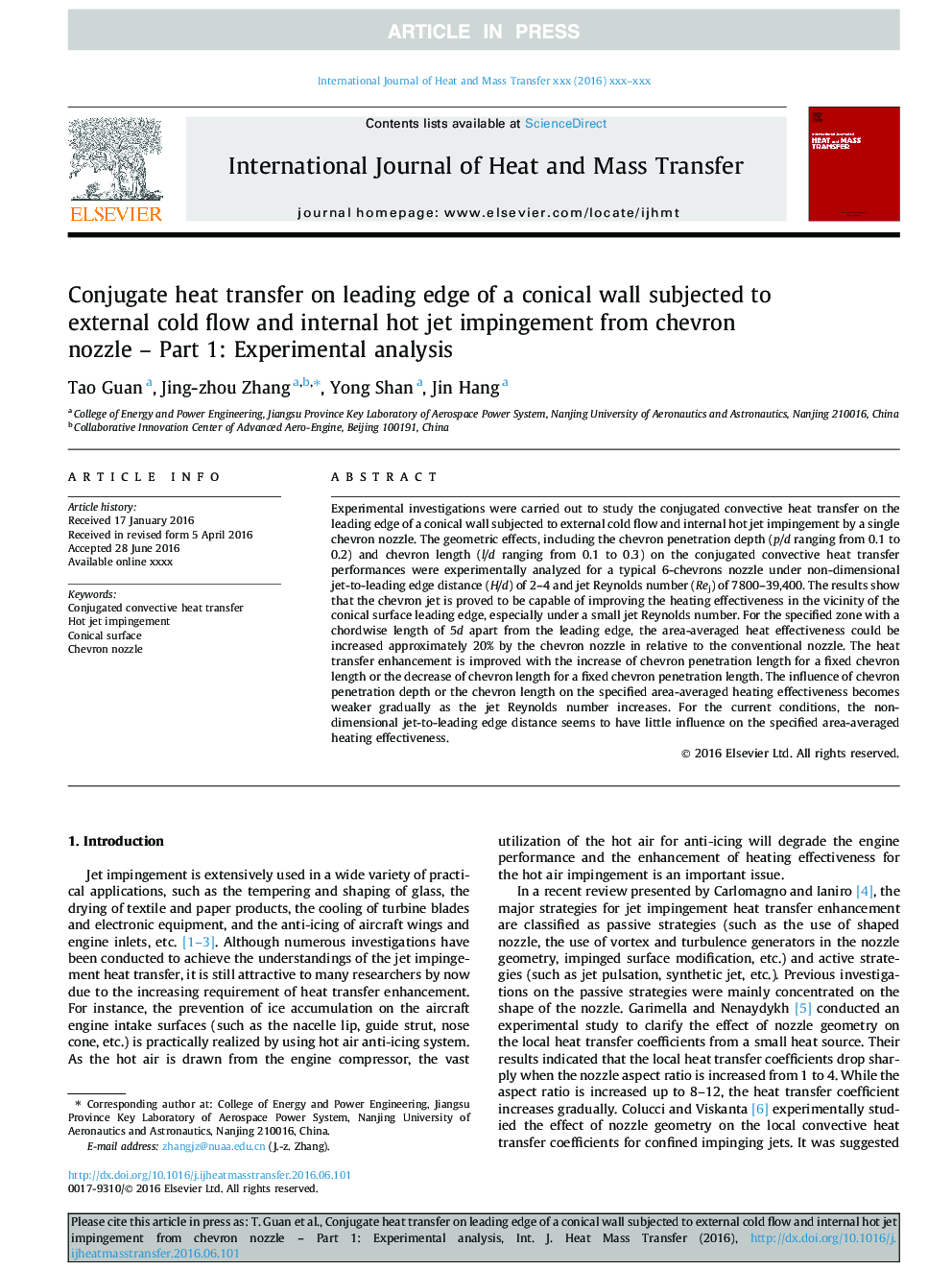| Article ID | Journal | Published Year | Pages | File Type |
|---|---|---|---|---|
| 4994774 | International Journal of Heat and Mass Transfer | 2017 | 10 Pages |
Abstract
Experimental investigations were carried out to study the conjugated convective heat transfer on the leading edge of a conical wall subjected to external cold flow and internal hot jet impingement by a single chevron nozzle. The geometric effects, including the chevron penetration depth (p/d ranging from 0.1 to 0.2) and chevron length (l/d ranging from 0.1 to 0.3) on the conjugated convective heat transfer performances were experimentally analyzed for a typical 6-chevrons nozzle under non-dimensional jet-to-leading edge distance (H/d) of 2-4 and jet Reynolds number (Rej) of 7800-39,400. The results show that the chevron jet is proved to be capable of improving the heating effectiveness in the vicinity of the conical surface leading edge, especially under a small jet Reynolds number. For the specified zone with a chordwise length of 5d apart from the leading edge, the area-averaged heat effectiveness could be increased approximately 20% by the chevron nozzle in relative to the conventional nozzle. The heat transfer enhancement is improved with the increase of chevron penetration length for a fixed chevron length or the decrease of chevron length for a fixed chevron penetration length. The influence of chevron penetration depth or the chevron length on the specified area-averaged heating effectiveness becomes weaker gradually as the jet Reynolds number increases. For the current conditions, the non-dimensional jet-to-leading edge distance seems to have little influence on the specified area-averaged heating effectiveness.
Keywords
Related Topics
Physical Sciences and Engineering
Chemical Engineering
Fluid Flow and Transfer Processes
Authors
Tao Guan, Jing-zhou Zhang, Yong Shan, Jin Hang,
